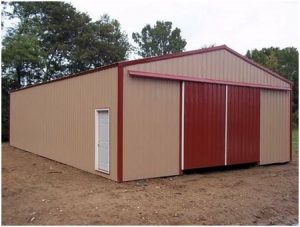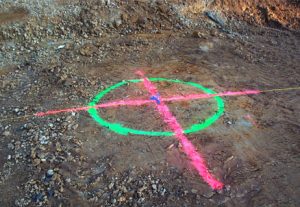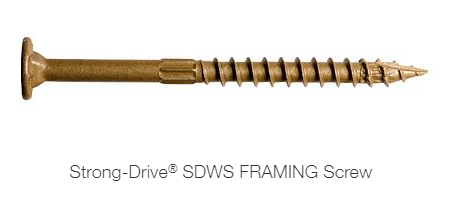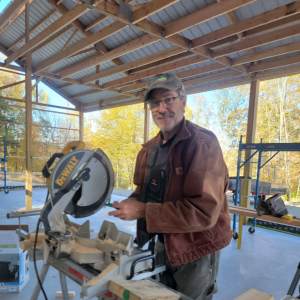Guest blog by J.A.Hansen, owner of Hansen Buildings…
There were several concurrent conferences with great speakers at the NFBA expo Mike the Pole Barn Guru, Eric (my business partner and President of Hansen Buildings) and myself recently attended in St. Louis, MO. The National Frame Builders’ Association website: www.nfba.org
gives this description: “NFBA is the only national trade association that represents post-frame industry professionals. The association is the country’s primary source of post-frame building resources, research, networking, news and education.”
And educational it was! Every morning there were break-out sessions with key-note speakers and top rated leaders in the post frame industry to speak on issues relating specifically to pole buildings. I was fortunate to attend one of the best presentations this year which outlined the design and testing of a 3 hour fire wall for post frame buildings. There have been tests for 1 hour fire walls, but not 3 hours. This test design required the fire wall framing had to be built completely out of wood, and tested in a UL laboratory under strict testing conditions.
 Firewalls are sometimes required in order to enclose egress paths, often hallways. This is so that people (or animals) trying to escape (or be rescued) from a burning building have a good chance of getting out without the building collapsing on them. Besides testing to see if the walls didn’t let the fire through, they also were tested for structural integrity to keep the weight of the roof from collapsing and crushing whoever is inside.
Firewalls are sometimes required in order to enclose egress paths, often hallways. This is so that people (or animals) trying to escape (or be rescued) from a burning building have a good chance of getting out without the building collapsing on them. Besides testing to see if the walls didn’t let the fire through, they also were tested for structural integrity to keep the weight of the roof from collapsing and crushing whoever is inside.
Why would you perform such a test? Number one on the list is of course for safety. Fire marshalls and county officials have a huge responsibility in writing and enforcing requirements for buildings which will best protect the lives of those using them. Number two on the list is ease of building and cost. What has typically been done to create a firewall is using concrete blocks (8” or 10”) to build a structurally independent wall to separate a building into two completely separate areas. This requires having to possibly hire a concrete block contractor to build the wall, which involves more time and expense overall. Material costs are estimated at $11/square foot for a concrete wall versus $2/square foot for a wood/gypsum board fire wall. Even adding in the labor for attaching 4 separate layers of gypsum board, the guesstimate is the wood/drywall would conservatively come in at half the price of a concrete fire wall.
Tim Royer, PE of Timber Tech Engineering, Inc., gave an enlightening presentation on the UL test he was involved in planning, and was present to observe as the fire wall was tested.
Keep in mind the wall must be “structurally independent”. This means the wall must not depend upon the balance of the building to hold it up.
The test involved these components (my simplified explanation):
Wood columns – minimum 5-1/2 x 6 inch.
- Wood girts – 2×4 girts applied horizontally to the face of the columns at 16 inches on center.
- Wood Blocking – 2×6 inch blocking vertically applied to the column face between each girt. This intermediate blocking is applied with four 16d nails, equally spaced.
- Gypsum Board – (4) layers 5/8 inch thick applied horizontally. Joints in adjacent layers are staggered a minimum 16 inches o.c.
There is more about the nailing requirements for the layers of the drywall, but suffice it to say, 4 layers with lots of nails makes for a heavy duty firewall!
Controlled fire in a UL laboratory then took the temperature up to 1600 degrees in 10 minutes and then gradually up to 1800 degrees. There were some great videos of the testing, showing the both the effects of fire and also pressure placed on the structurally independent fire wall. Pressure was added by using hydraulic jacks to exert pressures of up to 21,000 pounds per column. Normal pressures calculated on a wall are 4,000 pounds per post.
The test used lots of gauges with wires inserted into the wall assembly. So, they stoked up the fire within 3 feet of the wall assembly, and began to watch and document the results. The results were absolutely amazing to watch on video…so come back for tomorrow’s blog on “did the wall work?”









